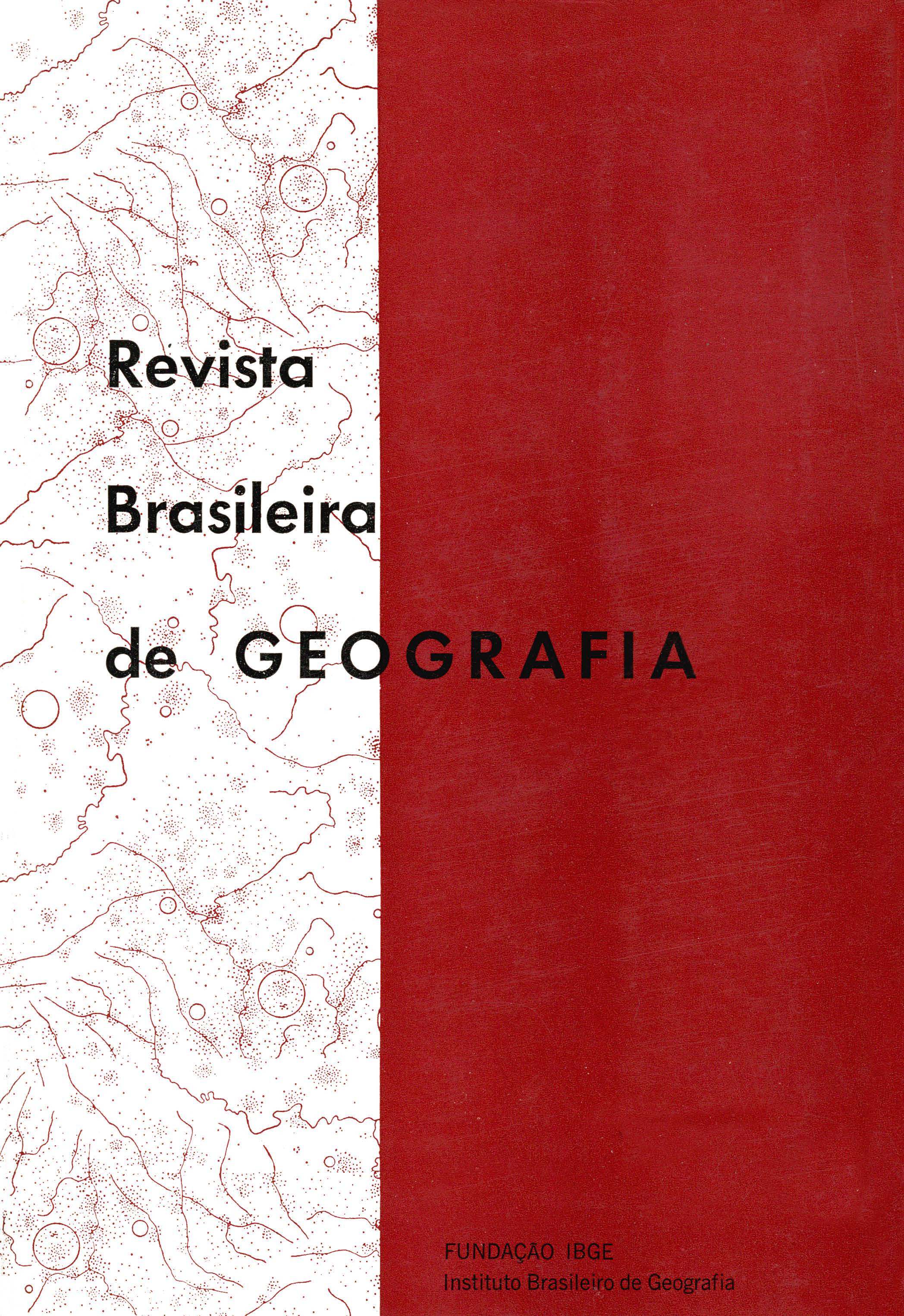Reflexões sobre a evolução da estrutura espacial do Brasil sob o efeito da industrialização
Keywords:
Industrialização, Geografia, Organização industrialAbstract
This work proposes to subject the theme to a "new line of thinking", surveying the problem of the complexity of the country's spatial structure, not confining its approach, therefore, to the central-peripheral areas, as commonly occurs with studies of this nature.
One of the first matters considered is that the principal guidelines of the actual spatial organization reflect a system whereby relations are established between an industrial economy and an official authority that upholds the capitalistic forros of development in the country. The formation of a spatial structure of the central-peripheral type is thus recognized as an innovation developed through industrialization, this having led to a great geographic concentration of human and economic resources and to the progressive integration of the nation's territory. On the other hand, however, industrialization also caused the reworking of the spatial structures that show a force of permanence in the country. The importance of the historic-structural category is thus stressed in the characterization of the geographic space.
In this connection, two principal notions are preeminent:
1 - the notion of the macroregion as a greatly extended ~pace is a traditional overview of the nation's territorial structuring, maintained by its industrialization. At the spatial level, the necessities of production and consumption closely linked to the industrial economy carry the need for areas that possess a considerable volume of activities, which can mean vast expanses. In this manner, the macroregion scale embodies different types of space. This covers areas that are defined either by the natural environment or by the forros of settlement of people; those that are found in a more retarded stage of development gain an organization of official institutionalized character corresponding to the central authorities' controlling power over extensive territories. But the macroregion also refers to nodal regions which develop, spontaneously or because of government influence, around the metropolitan cities. Consequently, the Southeast which is the Core-Area elaborated by the geographic concentration of industry, is divided into three macroregions, corresponding to each one of its metropolises.
Great differences can be perceived both in the nature and in the scale of the macroregions in Brazil; they are distinguished principally by the position of each unit in relation to the Center, by the historic process undergone by each one of these regions and by the representativeness and participation of the regional business community.
2 - the notion of a dynamism of coastal-oriented economic activities and the different efforts made for impelling them inland, which marked the historic formation of the nation. There is a new forro of coastal orientation which corresponds to the emergence of metropolitan centers which are, in their majority, located along the coastline. The metropolitan category implies attraction of various kinds of resources and the setting up of industries, in which the spatial discontinuity of a national system of centralization, not only economic but also political and financial, is expressed. Characteristics of the "extension of the Center" are thus evidenced in the official policy of tax incentives given as a means of reducing the capital costs of enterprises established in the Core-Area. The inland directional movement, for its part, leads off from the metropolitan centers which become points that support the advance into the inland territory for purpose of national integration and to attend to time overgrowing demand for natural resources. In this manner occurs the structuring of the new macroregions, backed by these coastal metropolises.
Among its principal features, the work underscores the fact, that there is evidence of the development in the country of a more hierarchical structuring of the space, whereby the different levels - macro, meso, microrregional and local - are subject to the same ensemble of forces, that is to say, the performance of the industrial economy and the policy of centralization. Hence, regional structures that are in process of development are not necessarily guided by the Widescale availability of decision-making centers or of regional business enterprises in a social context such as exists in Brazil where State corporations and multinational companies predominate. In certain cases, they apply to the existence of a regional market of such importance that the volume of industrial activity installed in the respective metropolis, even as an "extension of the Center", does not merely depend on relationships with the Core-Area. The work also stresses the fact that this process is identifiable with a pulsating space, to the extent that certain units tend to expand, to retract or to disappear altogether. This process also brings in mind the cyclical conditions of the space, insofar as it evidences a well-balanced dynamism of the concentration of investments in the maritime regions and the repercussions thereof in the interior of the country, corresponding to a spatial model that integrates the past and projects it into the future. Other forms of spatial models, such as the central-peripheral or that of the extension of the Center, appear as successive incorporation.
Among other considerations, in its conclusion, the work attributes to Geography the role of emphasizing the dynamism of the changes that occur in the space. In this respect, one must bear in mind the explicit aspects o! this space, which signifies that there is a choice of scales and of principal variables.
Insofar as regional planning is concerned, attention is called to the danger of adopting excessively strict measures in the hierarchy and in the application of symmetric solutions, when the nature of the regions show itself to be so varied. Along with this, emphasis is laid on the importance of preserving local forces as innovating elements and for cultural enrichment.






